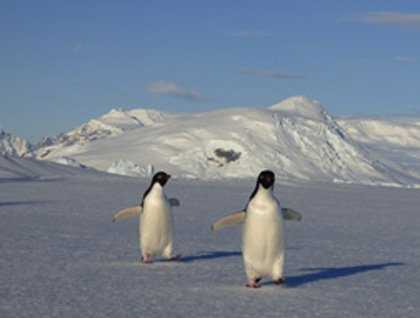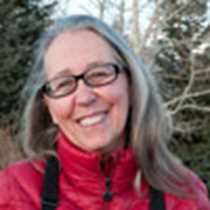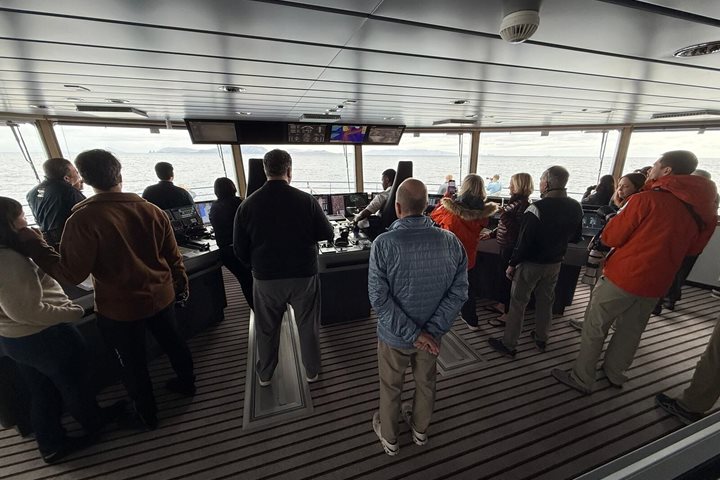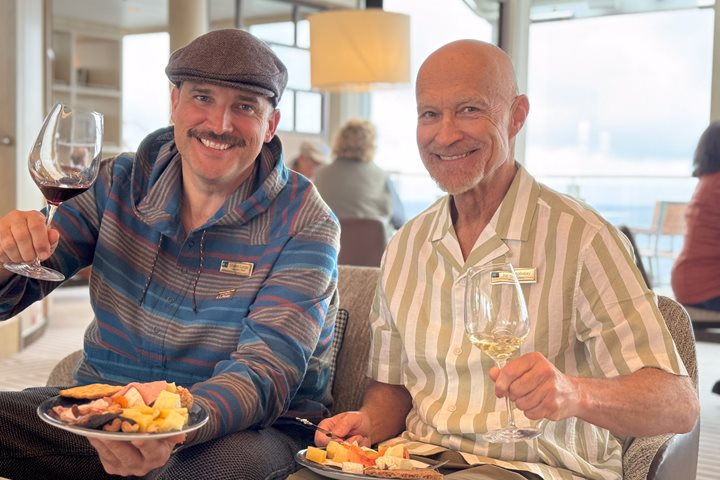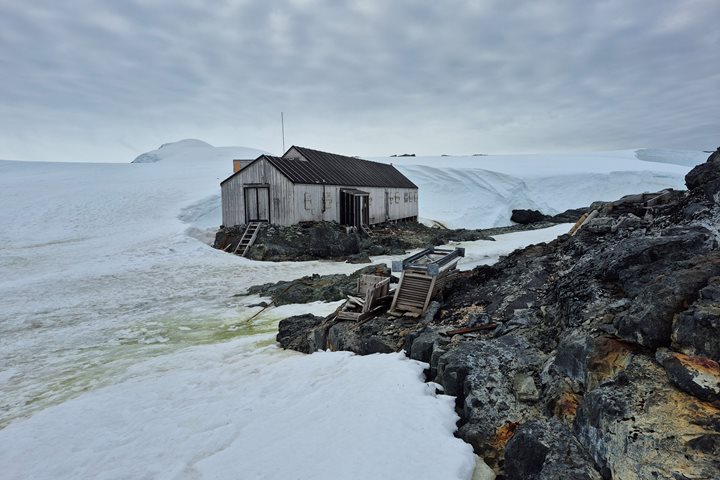There are days when everything comes together. Days when the sky is blue the breezes gentle and the company delightful. We had all of that and a huge day in the Antarctic - Today we crossed the Antarctic Circle! We headed south all night long and woke to the clearest skies alongside ice covered slopes and strait, flat sea ice. After breakfast we were informed that shortly we would cross that degree south that marks the Antarctic Circle. The bridge was crowded with folks watching the minutes and seconds pass on our instruments. Others gathered on the bow to be the absolute first on board to cross the circle and to celebrate with loved ones.
Before we got there, an unusual sight was announced over the public address system: a Weddell seal was eating an octopus directly off the port side of our ship. It thrashed and slapped its prey against the water and then in a moment’s time, the seal swallowed the octopus, dove and swam away. None of us had ever seen that before.
That was only the beginning of a most interesting day, we soon later landed at Detaille Island where we learned about a restored survival hut from the British Antarctic Survey. Our historian Carol Knott, retold the story of the research accomplished and the hasty evacuation of the hut as the group of men staying there realized their last available trip homeward. The hut feels like they just left yet the rusty metal and disintegrating fabric on the shirts and jackets still hanging on their hooks gives a hint to the decades this hut has been vacant.
Next we travelled along the sea ice edge in Lallemand Fjord looking for seals and penguins. Well over 40 crabeater seals were seen, then suddenly there was a dark seal a bit of a distance from the ice edge. Five pairs of binoculars scanned the dark spot waiting for a clear identification. Rich Kirchner, our photo instructor, focused on the seal’s spotting scope and confirmed our deepest wish - it was a Ross seal! This is the rarest seal in the Southern Ocean. Little is known about this seal except for its distinctive black and white stripes on the front of its throat. The first mate turned the ship around and everyone got a glimpse of the seal through the spotting scopes.
Later there was a surprise for us after dinner - Captain Graser and our expedition leader, Doug Gould, had planned a special walk. The Captain parked our ship into the sea ice, the gangway was dropped and we headed out into a white world. The spaciousness of this scene was unbelievable. Blue-tinted icebergs were held in the ice where seals and Adelie penguins lounged. Then Captain Graser and our naturalists walked to the resting Ross Seal where many, many pixels were used. The light was blazing but the hour was late and we headed back to the comfort of our floating home, the National Geographic Orion.

